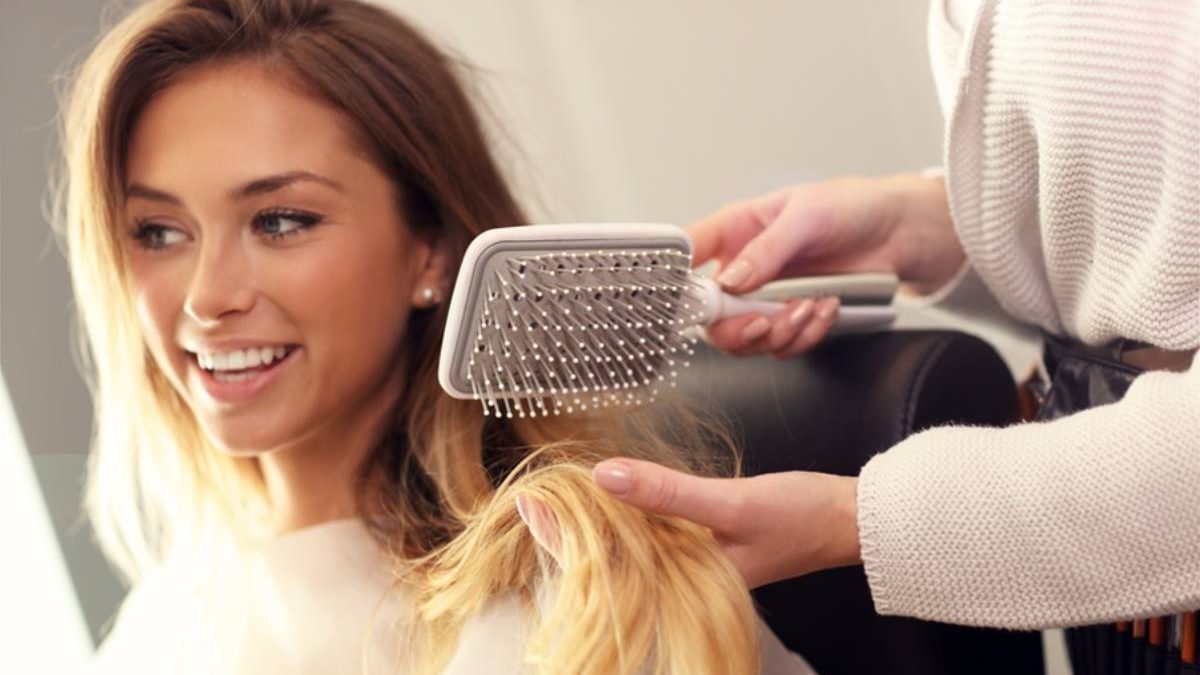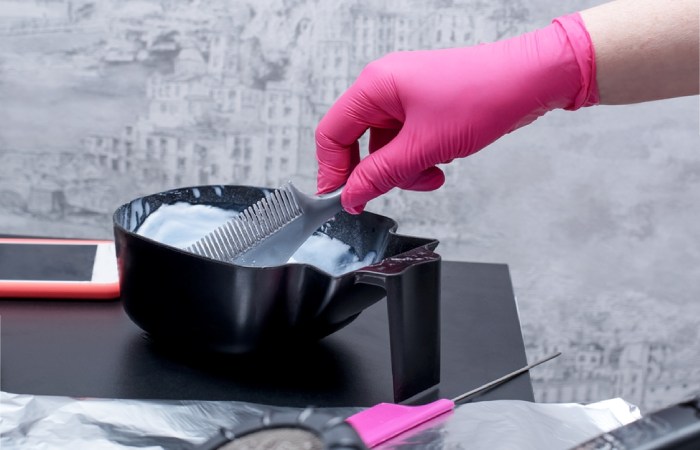The thrill of welcoming a new client to your chair is exhilarating. They have a vision, you have the expertise and, together, you’ll create a hair masterpiece. But before the color brushes dance across their full head of strands, there’s a crucial step often overlooked: the strand test.
Imagine the satisfaction of nailing that professional hair color look and achieving the perfect shade and dimension your client craves. Now, picture the opposite: uneven color, surprise brassiness or, worst-case scenario, hair breakage. A strand test can be the difference between these two scenarios.
Source: Kamil Macniak/Shutterstock.com
Think of it as a little insurance policy for both you and your client. It’s a chance to assess their hair’s health, gauge how it reacts to specific products and predict the final color outcome. With a strand test, you can confidently step into the coloring process knowing you’re setting both of you up for success.
Ditch the “I’ll just wing it” mentality and embrace the power of the strand test. In this article, we’ll explore why it’s a non-negotiable step for any new client. Ready to say goodbye to color surprises and hello to confident, predictable transformations? Buckle up, and let’s explore the world of strand tests.
Understanding Strand Tests
The strand test is a fundamental diagnostic tool at the core of the hairstyling process. Its purpose is clear: to assess how a client’s hair will respond to the ingredients or treatments involved in a hairstyling procedure. And doing a strand test is so simple there’s no reason not to do one. All you need to do is apply a small amount of the intended product(s) to a small, hidden section of hair and observe the results.
Benefits of Conducting a Strand Test
A strand test’s benefits go beyond immediate and surface-level considerations. Firstly, it functions as a proactive measure, safeguarding against potential adverse reactions and mitigating the risk of unintentional damage to the client’s hair. By identifying potential issues beforehand, you can adjust your approach and ensure a safe and satisfying experience for every client. Incorporating strand tests into the hairstyling routine also enhances professionalism. It is a testament to your commitment to responsible and personalized hair care.
Even if you know how to color correct hair, conducting strand tests saves time in the long run. Imagine meticulously painting a masterpiece only to discover — hours later — the colors clash. A quick strand test beforehand prevents costly color corrections and frantic adjustments, saving valuable time and hair health. It’s like taking a peek at the final canvas before diving into the process, ensuring your artistic journey starts on the right note and ends with a stunning, confident transformation every time.
Step-by-Step Guide to Conducting a Strand Test
Effectively integrating strand tests into the hairstyling process requires a meticulous step-by-step guide. Here’s your foolproof guide to conducting a strand test like a pro:
1. Gather your supplies
- Gloves: Protect your hands from potential irritation.
- Tinting bowl and brush: For mixing and applying the color.
- Clips and cotton balls: To isolate the test strand and protect surrounding hair.
- Petroleum jelly: Apply to surrounding skin to avoid accidental staining.
- Developer and hair color: Use the hair color developer and hair color you plan to use on the full head.
2. Choose your strand
Select a small, inconspicuous section of hair near the nape of the neck. About the width of a pencil is ideal.
Clip away the rest of the hair to avoid any accidental coloring.
3. Prepare the color mix
Follow the manufacturer’s instructions for mixing the developer and hair color in the tinting bowl.
4. Apply the color
Using the brush, carefully apply the color mixture to the isolated strand, ensuring it saturates from root to tip.
5. Process the color
Set a timer for the appropriate processing time, as stated in the product instructions.
6. Rinse and assess
Rinse the strand thoroughly with lukewarm water until the water runs clear. Towel-dry the strand and analyze the final color result. Consider factors like brightness, tone and unwanted undertones.
7. Make adjustments
Based on the strand test results, you may need to adjust the color formula or processing time for the full head application. This could involve changing the developer volume, choosing a different shade or tweaking the processing time.
Common Mistakes to Avoid
Despite the importance of strand tests, certain mistakes can compromise their effectiveness. One of the most critical errors is the temptation to skip the strand test due to time constraints. Succumbing to this temptation can lead to unforeseen complications during the actual treatment, potentially jeopardizing the overall outcome. Another common mistake is using improper products or techniques, often due to a lack of attention to detail or rushed procedures. Ignoring client input and history is another pitfall to avoid, as these elements hold valuable clues about potential sensitivities or reactions.

Color with Confidence
So, should you do a strand test on a new client’s hair? The answer, resounding and unequivocal, is yes. It’s not just a suggestion — it’s a professional responsibility. It’s the difference between stepping into a color consultation with a blindfold and stepping onto a stage with a spotlight. A strand test is a commitment to confidence, transparency and client satisfaction. It builds trust from the moment a client sits in your chair.
With each new client, embrace the strand test not as a chore but as a window of opportunity. It’s a chance to analyze, predict and, ultimately, deliver stunning results. Don’t let the fear of a few extra minutes deter you from the immense satisfaction of exceeding expectations and solidifying your reputation as a colorist who goes the extra strand.
Take the plunge, embrace the power of this essential step and watch your career flourish with the vibrant hues of client confidence and professional pride. Go forth, wield your knowledge and tools and let every strand test be a testament to your artistry and commitment to the magic of professional hair color.


